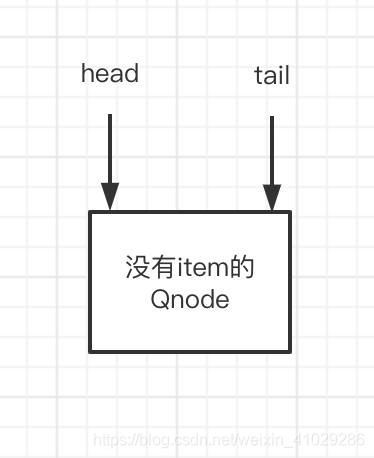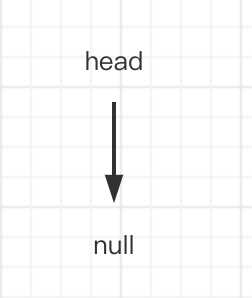SynchronousQueue
SynchronousQueue是一种特殊的BlockingQueue,它本身没有容量。先调put(e),线程会阻塞;
直到另外一个线程调用了take(),两个线程才同时解锁,反之亦然。对于多个线程而言,例如3个线程,
调用3次put(e),3个线程都会阻塞;直到另外的线程调用3次take()。
public SynchronousQueue(boolean fair) {
//fair是否是公平的,公平先进先出(队列),不公平先进后出(栈)
transferer = fair ? new TransferQueue<E>() : new TransferStack<E>();
}
put方法
public void put(E e) throws InterruptedException {
if (e == null) throw new NullPointerException();
if (transferer.transfer(e, false, 0) == null) {
Thread.interrupted();
throw new InterruptedException();
}
}
take方法
public E take() throws InterruptedException {
E e = transferer.transfer(null, false, 0);
if (e != null)
return e;
Thread.interrupted();
throw new InterruptedException();
}
可以看到put和take方法都调用了transfer()方法,只是第一个参数不一样,如果是put(…),则第1个参数就是对应的元素; 如果是take(),则第1个参数为null。
abstract static class Transferer<E> {
/**
* Performs a put or take.
*
* @param e if non-null, the item to be handed to a consumer;
* if null, requests that transfer return an item
* offered by producer.
* @param timed if this operation should timeout
* @param nanos the timeout, in nanoseconds
* @return if non-null, the item provided or received; if null,
* the operation failed due to timeout or interrupt --
* the caller can distinguish which of these occurred
* by checking Thread.interrupted.
*/
abstract E transfer(E e, boolean timed, long nanos);
}
transferer有TransferQueue(队列模式)和TransferStack(栈模式)两个实现类,所以transfer()方法有两个不同的实现
假设有3个线程调用put方法,然后有3个线程调用take方法
如果是公平模式(队列模式),则第1个调用put(…)的线程1会在队列头部,第1个到来的take()线程
和它进行配对,遵循先到先配对的原则,所以是公平的;如果是非公平模式(栈模式),则第3个调用
put(…)的线程3会在栈顶,第1个到来的take()线程和它进行配对,后put的线程先配对
TransferQueue
public class SynchronousQueue<E> extends AbstractQueue<E> implements
BlockingQueue<E>, java.io.Serializable {
// ...
static final class TransferQueue<E> extends Transferer<E> {
static final class QNode {
volatile QNode next;
volatile Object item;
volatile Thread waiter;
final boolean isData;
//...
}
/** Head of queue */
transient volatile QNode head;
/** Tail of queue */
transient volatile QNode tail;
/**
* Reference to a cancelled node that might not yet have been
* unlinked from queue because it was the last inserted node
* when it was cancelled.
*/
transient volatile QNode cleanMe;
TransferQueue() {
//没有item的空Qnode节点
QNode h = new QNode(null, false); // initialize to dummy node.
head = h;
tail = h;
}
}
}
TransferQueue是一个基于单向链表而实现的队列,通过head和tail 2个指针记录头部和尾部。初始化的时候,head和tail会指向一个item为空的Qnode节点。

3个线程分别调用put,生成3个QNode,连成队列。

来了一个线程调用take,会和队列头部的第1个QNode进行配对

配对后移出队列

put节点和take节点一旦相遇,就会配对出队列,所以在队列中不可能同时存在 put节点和take节点,要么所有节点都是put节点,要么所有节点都是take节点。
TransferQueue的transfer实现
E transfer(E e, boolean timed, long nanos) {
QNode s = null; // constructed/reused as needed
//true为put false为take
boolean isData = (e != null);
for (;;) {
QNode t = tail;
QNode h = head;
//如果未初始化完毕,自旋等待
if (t == null || h == null) // saw uninitialized value
continue; // spin
//当队列为空,或者当前线程和队列中元素是同一种模式
if (h == t || t.isData == isData) { // empty or same-mode
QNode tn = t.next;
//不一致读,再来一次
if (t != tail) // inconsistent read
continue;
//t不是真正的尾节点,设置尾节点
if (tn != null) { // lagging tail
advanceTail(t, tn);
continue;
}
if (timed && nanos <= 0) // can't wait
return null;
if (s == null)
//把要新增的e加入尾部
s = new QNode(e, isData);
if (!t.casNext(null, s)) // failed to link in
continue;
//后移tail指针
advanceTail(t, s); // swing tail and wait
//LockSupport.park或者LockSupport.parkNanos挂起线程
Object x = awaitFulfill(s, e, timed, nanos);
//以下是唤醒后的操作
//挂起的时间到了,并没有等到和它配对的线程,移除这个节点
if (x == s) { // wait was cancelled
clean(t, s);
return null;
}
//轮到了s节点
if (!s.isOffList()) { // not already unlinked
//s节点的前一个节点,是他加入进去时的tail,把s节点前移
advanceHead(t, s); // unlink if head
if (x != null) // and forget fields
s.item = s;
s.waiter = null;
}
return (x != null) ? (E)x : e;
} else { // complementary-mode
//两个模式不一样的时候,和队列的第一个元素配对
QNode m = h.next; // node to fulfill
//不一致读自旋
if (t != tail || m == null || h != head)
continue; // inconsistent read
Object x = m.item;
//如果是put节点,则isData=true,item!=null;如果是take节点,则isData=false, item=null
if (isData == (x != null) || // m already fulfilled
x == m || // m cancelled
//尝试配对,配对失败,出队列
//把自己的item x换成对方的item e,如果CAS操作成功,则配对成功
!m.casItem(x, e)) { // lost CAS
advanceHead(h, m); // dequeue and retry
continue;
}
//配对成功,出队列
advanceHead(h, m); // successfully fulfilled
//唤醒配对的mqnode的线程
LockSupport.unpark(m.waiter);
return (x != null) ? (E)x : e;
}
}
}
TransferStack
TransferStack也是一个单向链表。不同于队列,只需要head指针就能 实现入栈和出栈操作。
static final class TransferStack extends Transferer {
static final int REQUEST = 0; //take节点
static final int DATA = 1; //put节点
static final int FULFILLING = 2;
static final class SNode {
volatile SNode next; // 单向链表
volatile SNode match; // 配对的节点
volatile Thread waiter; // 对应的阻塞线程
Object item;
int mode; //三种模式
//...
}
volatile SNode head;
}
链表中的节点有三种状态,REQUEST对应take节点,DATA对应put节点,二者配对之后,会生成一 个FULFILLING节点,入栈,然后FULLING节点和被配对的节点一起出栈。
一开始head是指向null的

3个线程调用3次put,入栈

线程4调用take,和栈顶的第1个元素配对,生成FULLFILLING节点,入栈

栈顶的2个元素同时出栈

TransferStack的transfer实现
E transfer(E e, boolean timed, long nanos) {
SNode s = null; // constructed/reused as needed
int mode = (e == null) ? REQUEST : DATA;
for (;;) {
SNode h = head;
//如果和栈顶的snode是同一种模式
if (h == null || h.mode == mode) { // empty or same-mode
if (timed && nanos <= 0) { // can't wait
if (h != null && h.isCancelled())
casHead(h, h.next); // pop cancelled node
else
return null;
//入栈
} else if (casHead(h, s = snode(s, e, h, mode))) {
//线程挂起
SNode m = awaitFulfill(s, timed, nanos);
if (m == s) { // wait was cancelled
clean(s);
return null;
}
if ((h = head) != null && h.next == s)
casHead(h, s.next); // help s's fulfiller
return (E) ((mode == REQUEST) ? m.item : s.item);
}
//不是同一种模式
} else if (!isFulfilling(h.mode)) { // try to fulfill
if (h.isCancelled()) // already cancelled
casHead(h, h.next); // pop and retry
//生成FULFILLING节点,入栈
else if (casHead(h, s=snode(s, e, h, FULFILLING|mode))) {
for (;;) { // loop until matched or waiters disappear
SNode m = s.next; // m is s's match
if (m == null) { // all waiters are gone
casHead(s, null); // pop fulfill node
s = null; // use new node next time
break; // restart main loop
}
SNode mn = m.next;
if (m.tryMatch(s)) {
//两个节点一起出战
casHead(s, mn); // pop both s and m
return (E) ((mode == REQUEST) ? m.item : s.item);
} else // lost match
s.casNext(m, mn); // help unlink
}
}
} else { // help a fulfiller
//已经匹配了,出栈
SNode m = h.next; // m is h's match
if (m == null) // waiter is gone
casHead(h, null); // pop fulfilling node
else {
SNode mn = m.next;
if (m.tryMatch(h)) // help match
//两个节点一起出栈
casHead(h, mn); // pop both h and m
else // lost match
h.casNext(m, mn); // help unlink
}
}
}
}